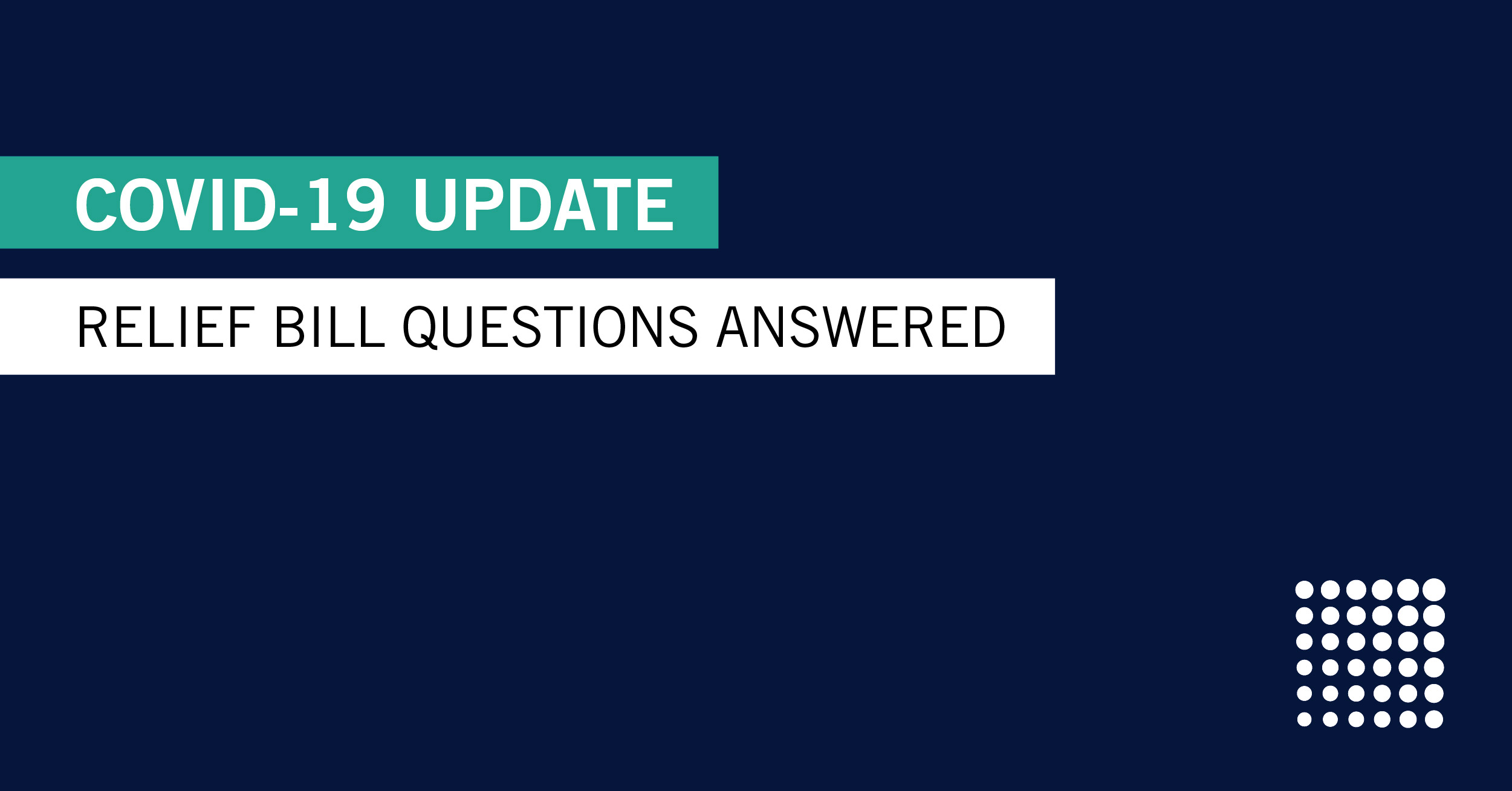A compilation of most frequently asked questions from our recent webinar
CWA Partner Dan Wicker hosted a webinar last week, March 20, 2020 with CEDR HR Solutions CEO Paul Edwards. The popular webinar, “Managing Staff and Office Closures: Practical Guidance for Employers” went over several topics around preparing your practice for closure, managing staff during this turbulent time and sharing resources available to you.
We received many questions during the live webinar, and were unable to address them all during the session. As a follow up, our CWA advisors reviewed the questions, grouped them into pertinent categories and have addressed many of the questions and concerns below.
Listen to the March 20 Webinar On-Demand Here
As a reminder, the information provided below does not take into account individual financial circumstances and is not intended to be comprehensive or replace individual tax or financial planning advice.
What should I do with my staff (terminate, layoff, furlough) and when should I take action?
This is both a financial and emotional decision. As the business owner, you must take measures to protect your business so there is a place of employment for your employees when you are ready to re-open.
Temporarily laying off your employees now will provide immediate cash flow relief for the practice. By doing this, all employees will be eligible to file for full unemployment. States have made provisions to allow immediate access to employees for unemployment due to the COVID-19 crisis.
Although the timeline of the unemployment is uncertain, this is not a permanent situation and as your practices will re-open, you will need to rehire your staff to begin operations again. The first step to accomplish the layoff is to provide each staff member with the memo provided by CEDR, putting employees on notice of the office closure. Your employees will then use this letter to apply for their full unemployment benefits.
- What happens if they work some during this period?
In the event you have staff members work for ANY reason (including mandatory virtual meetings) during the office closure you will be required to pay them their normal pay and issue them a payroll check. The employee will then be required to report their earnings to the unemployment office so that they can adjust their unemployment benefits accordingly.
- What happens to the pension plan?
The employees’ pension plan balance will remain intact after the layoff. While the employee is no longer receiving a paycheck there will be no salary deferral or employer match during that time. Your employees may wish to reduce the salary deferral to $0 during this time. They can do this by completing an updated salary reduction agreement. When an employee returns to work, they will resume participation in the plan at the same level and vesting that they had prior to the layoff. The layoff will not immediately result in your employees becoming vested in any of their unvested plan balance however, this final determination will be made at the end of the plan year by your pension administrator.
- What about exempt employees?
Exempt employees are eligible for unemployment benefits just as hourly employees are eligible. The doctor will need to convert the salaried employee to a non-exempt so that if the employee is requested to work at all during the lay off period the employer can pay them for only the hours worked.
- What about Paid Time Off (PTO) and/or Accrued Vacation?
If you provide your employees with PTO and/or vacation and they have accrued this benefit at the time of the lay off, then the employee has the option to request they be paid the accrued amount. If they so choose, you are obligated to pay them this amount. This will delay the time frame for the employee to receive any unemployment benefits and when they return to work, they will not have any benefit remaining.
What do I do about medical insurance premiums?
First, you should contact your health insurance company/broker to discuss your options/requirements if an employee is laid off.
When an employee is laid off the employer’s responsibility for all compensation is suspended. Your plan may have provisions that provide for a 90-day grace period where you as the employer can continue to pay the premium for your employee. After any grace period, COBRA coverage would apply if applicable.
COBRA coverage is mandatory for employers with greater than 20 employees. Many states have laws similar to COBRA for employers with less than 20 employees. Check with your healthcare provider to determine if your state has this coverage if you have less than 20 employees. If the employee qualifies for coverage under HR 6201 and is entitled to Family Medical Leave coverage, then the employer is required to continue making their normal contributions to the cost of the health insurance premiums.
How do we treat Associate Doctors?
This is dependent upon whether they are independent contractors or employees. If they are independent contractors, then they will not be able to file unemployment under your business. They are technically self-employed. For associates that are employees, they will be eligible for unemployment benefits.
Again, because they are considered exempt employees you will want to convert them to non-exempt status so you would only have to pay them for hours worked during the layoff period. You will also need to refer to any legal contract you have in place with them to determine if other steps should be taken.
How do you file for unemployment and who is eligible?
All employees who have been laid off are federally eligible for unemployment. Every state has their specific requirements and processes to be followed to obtain the benefit. You should consult your state agency to seek guidance for you and your staff on the process to be filed. For owner doctors and family who have been employed and received W-2 wages, they too will be federally eligible to file for unemployment. Again, you will need to verify with your state agency if an owner doctor is eligible.
Who does the Relief Act (HR 6201) apply to and when does it go into effect?
The Relief Act applies to all employers with fewer than 500 employees. The act was signed on March 18, 2020, and will be effective no later than 15 days after signature or April 2, 2020. The act does provide for exclusion of employers of healthcare workers and emergency responders.
The Secretary of Labor may exempt employers with less than 50 employees. But we do not have guidance on the criteria for exemption at this writing. We will provide guidance as soon as the DOL issues the regulations.
What are the tax credit incentives and how do they work?
If an employer is obligated to pay benefits under HR 6201, then they will be entitled to a tax credit. The credit amount varies dependent upon the benefit the employer was required to pay out. Eligible employers who pay qualifying sick or childcare leave will be able to retain an amount of payroll taxes equal to the amount of leave they paid rather than depositing payments with the IRS. To the extent the amount paid exceeds the payroll taxes, the employer will file a request for accelerated payment from the IRS for the difference. IRS directions on this procedure are forthcoming.
Our team is working around the clock to keep up with the changes in the economy and the government’s reaction to it. We are here to help guide clients through this uncertainty.
We hope this helps provide clarity for your situation, but we understand every practice is unique. If you want a financial planning team dedicated to your success, contact our team.














